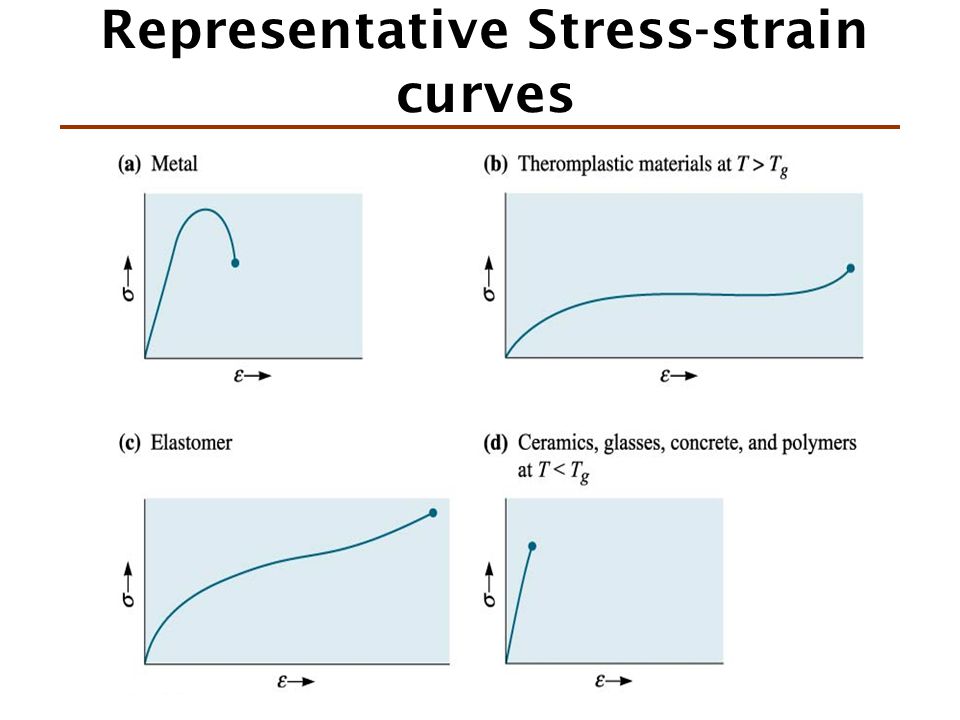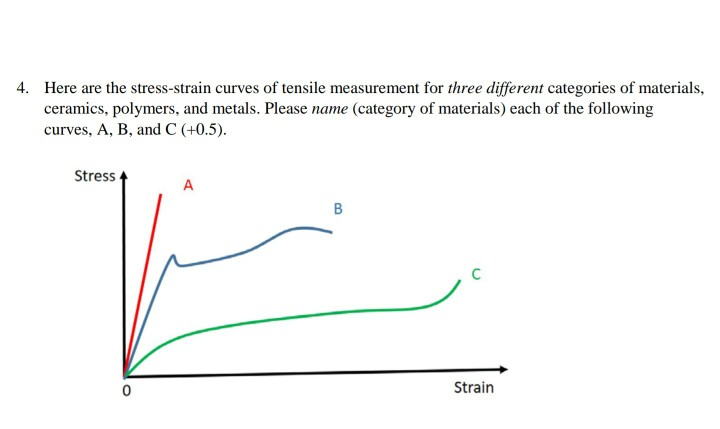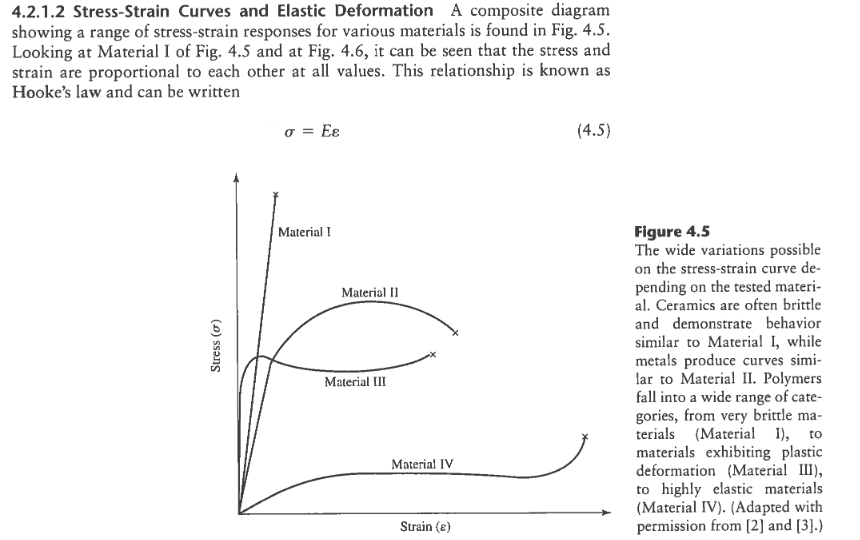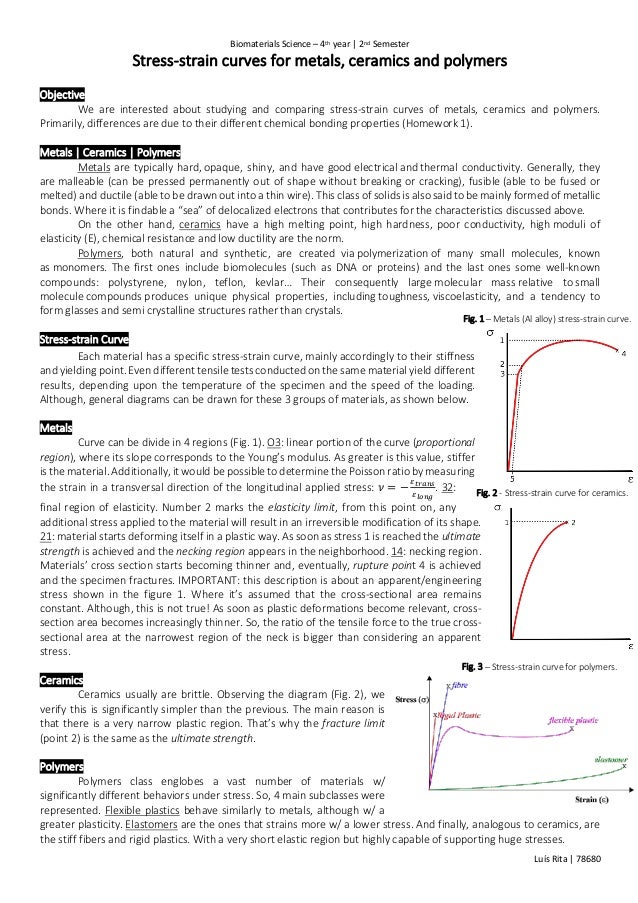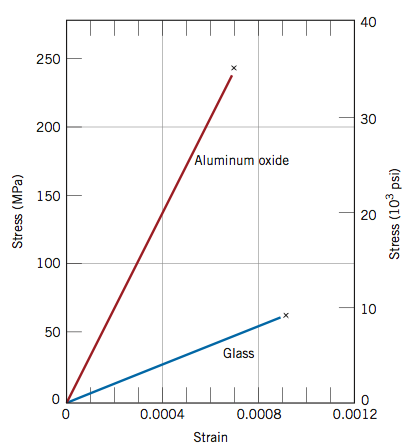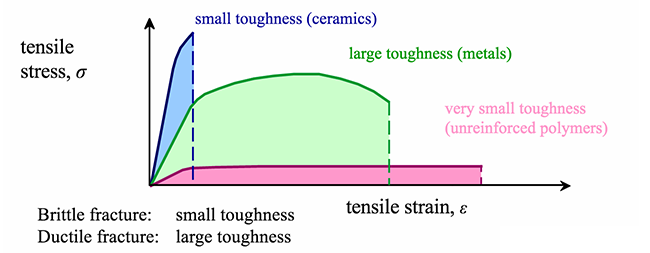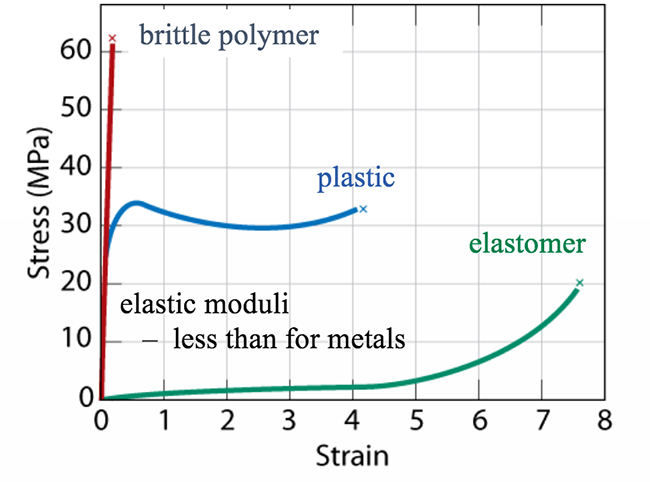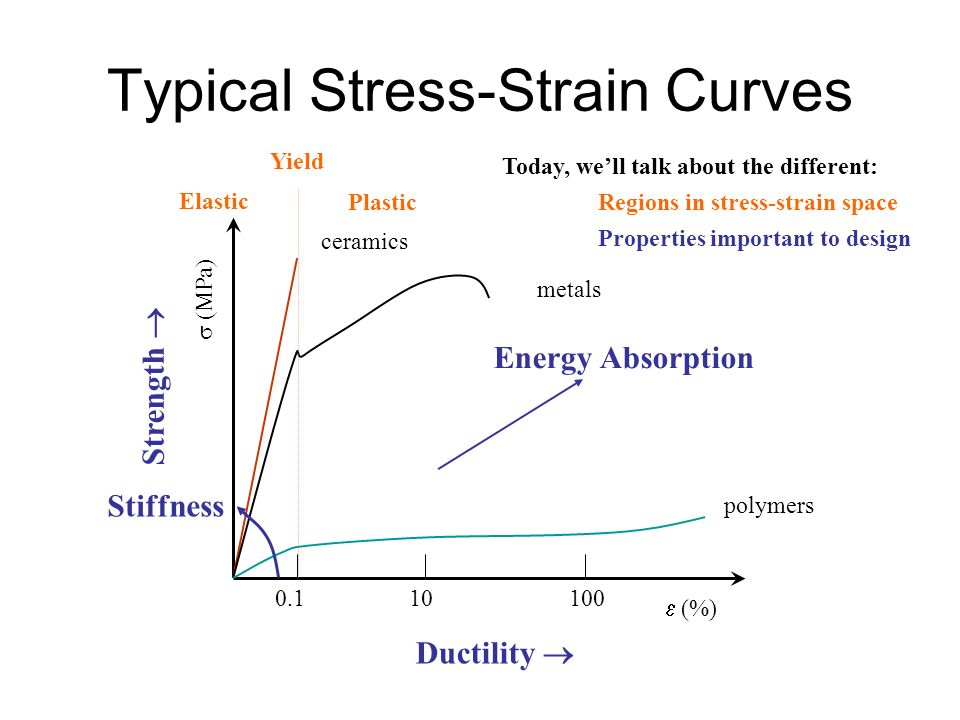The engineering stress strain curve does not give a true indication of the deformation characteristics of a metal because it is based entirely on the original dimensions of the specimen and these dimensions change continuously during the testing used to generate the data.
Ceramic vs metal stress strain curve.
Derived from axially loading an object and plotting the stress verses strain curve.
The last two indicate ductility.
The stress at the maximum on the engineering stress strain curve metals.
The zone where a material will return to its original shape for a given amount of stress toe region applies to a ligaments stress strain curve.
And finally analogous to ceramics are the stiff fibers and rigid plastics.
The general shape of the engineering stress strain curve fig.
The first two are strength parameters.
1 metals al alloy stress strain curve.
In engineering and materials science a stress strain curve for a material gives the relationship between stress and strain it is obtained by gradually applying load to a test coupon and measuring the deformation from which the stress and strain can be determined see tensile testing these curves reveal many of the properties of a material such as the young s modulus the yield strength.
Occurs when noticeable necking starts ceramics.
2 stress strain curve for ceramics.
With a very short elastic region but highly capable of supporting huge stresses.
1 requires further explanation.
Occurs when polymer backbones are aligned and about to break σ y engineering typical response of a metal ts stress engineering strain.
Occurs when crack propagation starts polymers.
The parameters which are used to describe the stress strain curve of a metal are the tensile strength yield strength or yield point percent elongation and reduction of area.
